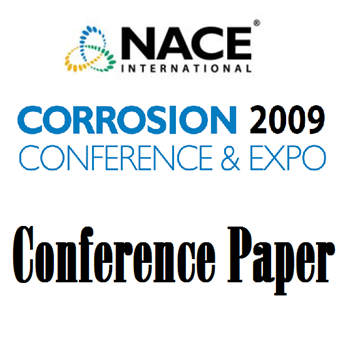Search
11237 Flow Loop Study of Chloride Concentration Effect on Erosion, Corrosion and Erosion-Corrosion of Carbon Steel in CO2 Saturated Systems
Also Purchased
11245 Flow-Induced Corrosion and Erosion-Corrosion Assessment of Carbon Steel Pipework in Oil and Gas Production
Product Number:
51300-11245-SG
ISBN:
2011 11245 CP
Publication Date:
2011
$20.00
09479 Erosion-Corrosion Failure of a Carbon Steel Pipe Elbow - A Case Study
Product Number:
51300-09479-SG
ISBN:
09479 2009 CP
Publication Date:
2009
$20.00
11238 Integrity of Corrosion Inhibitor Films in Multiphase Flow
Product Number:
51300-11238-SG
ISBN:
2011 11238 CP
Publication Date:
2011
$20.00




